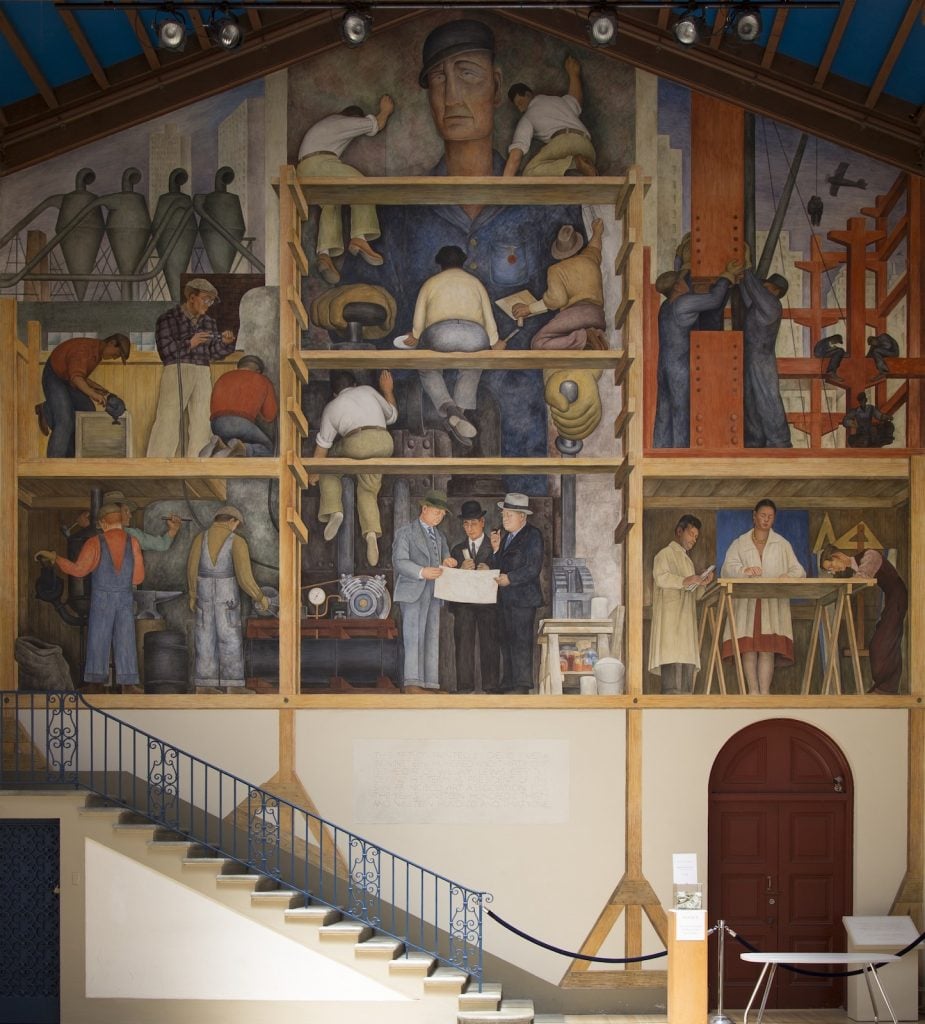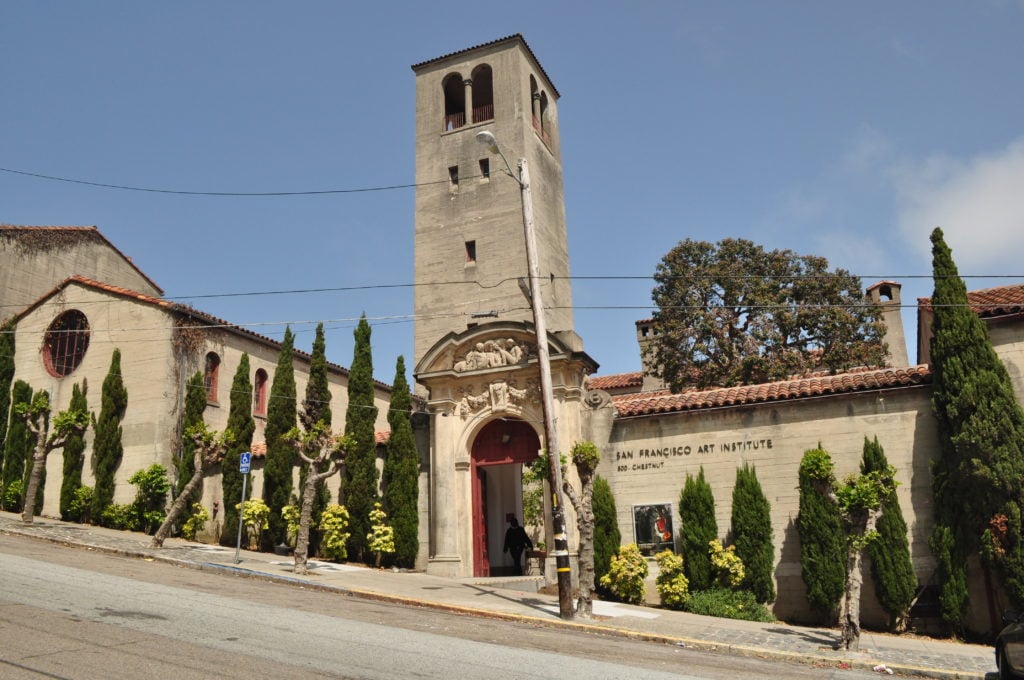Art World
The Cash-Strapped San Francisco Art Institute May Sell a Beloved Diego Rivera Mural to George Lucas to Shore Up Its Finances
The possible sale of the work, which was done in 1931, is getting public blowback.

The possible sale of the work, which was done in 1931, is getting public blowback.

Brian Boucher

The San Francisco Art Institute, which has faced financial hardships in recent years and whose future has long been in question, may soon sell off one of its greatest treasures.
A December 23 letter to staff and faculty from vice president and dean of academic affairs Jennifer Rissler indicated that “all options to save SFAI” are in play, and that the school’s board had voted to explore “pathways and offers for endowing or selling” a site-specific 1931 mural by Diego Rivera that has been appraised at $50 million.
Some present at a December 17 meeting of the school’s board (but unwilling to go on record) say that president Pam Rorke Levy indicated that the potential buyer is filmmaker George Lucas, whose Lucas Museum of Narrative Art is under construction in Los Angeles.
A statement from SEIU, the union that represents adjunct faculty, says that Levy shut down an attempt at the board meeting to hear from those who opposed the sale, and told those present that the school had lined up a buyer who wanted the mural for “his museum” in Los Angeles.
“SFAI cannot comment further but to say a number of conversations have been taking place with several institutions about the possibility to endow or acquire the mural to ensure the future of the school and uphold our mission,” Levy, who denied the SEIU’s allegations, said in a statement issued to Artnet News.
Board member Doug Hall, meanwhile, says there is “no immediate plan” to sell the mural.
“We do not comment on speculation about acquisitions,” a Lucas museum representative told Artnet News in an email.
But the possibility of the work being sold is already getting public blowback.
“It would be a crime against art and the city’s heritage,” Aaron Peskin, a local official, told the San Francisco-based publication Mission Local. “Educational institutions should teach art, not sell it.”
If the city’s historic preservation ordinance doesn’t apply to the mural, he said, he would “initiate a landmark designation of the murals themselves.”
The nation’s first art academy west of the Mississippi, which boasts graduates such as Catherine Opie and Kehinde Wiley, and where giants like Ansel Adams once taught, has suffered numerous financial crunches over its long history.
But as Bay Area real estate prices and cost of living have skyrocketed, the financial situation at the school, which offers only fine-art degrees and no (generally more lucrative) design and architecture programs, has become especially precarious.

San Francisco Art Institute. Courtesy of Getty Images.
The school, whose endowment stood at just $10 million as of June, charges tuition of about $46,000 for undergraduates and about $48,000 for graduate students. In the past, the student body has numbered as many as 700. Recently those numbers had fallen by more than half.
SFAI’s death knell may have been sounded when the board took out a $16 million loan to renovate rented space on the city’s piers to greatly expand its studio facilities. Immediately after the school closed last year due to the public health situation, the board made the dramatic announcement that it saw “no clear path” forward and that it was “unclear when instruction would resume.”
It instructed students to transfer to other schools and laid off almost all its adjunct faculty.
The plot thickened in April, when SEIU filed a complaint with the California Attorney General alleging potential self-dealing by the board. In the filing, it alleged that the board promised to abandon the studio expansion if it couldn’t raise the money for it, but then took the loan anyway, putting up its property as collateral. (A representative for the school said it has not been provided the filing, and therefore the administration is unable to respond to the claims.)
When the school’s creditors moved to foreclose and put the campus up for sale, the UC Regents stepped in and bought the $19.7 million debt, taking temporary ownership and becoming the school’s landlord at 800 Chestnut Street in the touristy Russian Hill neighborhood. The school has six years to pay off the debt.
If SFAI is not successful in its fundraising efforts and does not arrange to sell the mural or endow it by the time its lease agreement expires in fall 2026, the campus—and, crucially, the mural—will revert to UC ownership, according to a spokesperson for the university. The UC Board of Regents will then decide which action, if any, to take next, she said.
Painted in May 1931, The Making of a Fresco Showing the Building of a City shows Diego Rivera and his assistants perched on trompe-l’oeil scaffolding as they paint the mural itself.
“Rivera was creating murals that relate not only to local history and industry, but also to the specific purposes of the building they were destined for, so, not surprisingly for an art school, this mural was about the making of art,” James Oles, the curator of “Diego Rivera’s America,” which will open in 2022 at the San Francisco Museum of Modern Art, told Artnet News.
“Rivera’s murals in Mexico had created a strong sense of national identity in civic terms, and now, intellectuals and architects wanted him to create a vision for the city of San Francisco,” Oles said.
“The Art Institute mural is about the city and its exciting growth. Around the artist and his assistants are engineers and architects who represent the power of San Francisco to build, even during the Depression.”
The Los Angeles City Council approved Lucas’s museum in 2017.